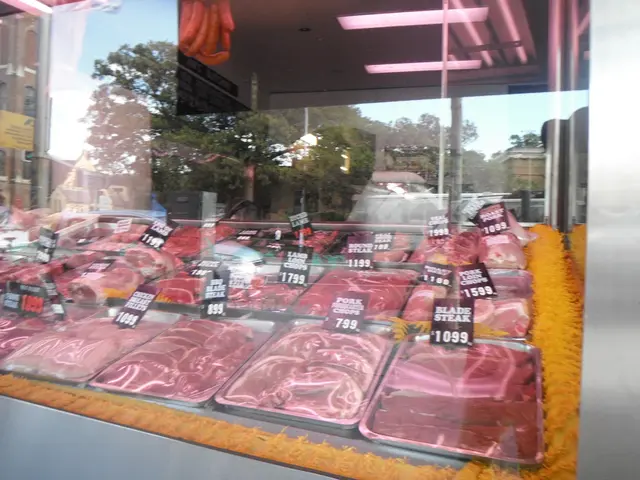Fires are igniting intensely.
Russia's Iron Production Predicted to Increase by 13% by 2030, Says S&P Global
Russia's iron production is expected to grow significantly over the next decade, according to a forecast by S&P Global. The global ratings agency predicts that iron production will reach 57.6 million tons by 2030, a 13% increase from the 2024 level.
Starting from this year, Russia is set to gradually increase its iron output, with analysts estimating that production will reach 53.1 million tons in 2025, up from 51 million tons in 2024. However, some analysts regard these estimates as overly optimistic, suggesting that a shift in global market conditions is necessary for the forecast to materialize.
Iron output in Russia remains low, with production currently at near five-year lows, according to sources on the steel market. In 2024, production fell by 5.5% year-on-year to 51.2 million tons, a gap that narrowed slightly in January-April 2025, falling by 0.4% year-on-year to 17.2 million tons.
Among major metallurgical companies, only Severstal reported a year-on-year increase in iron production in the first quarter, up by 5% to 2.91 million tons. MMK's iron output fell by 6.9% year-on-year in the same period, to 2.18 million tons, due to significant capital repairs in the blast furnace sector.
Despite these developments, the low growth potential for steel production and consumption in the country raises questions about increased iron production. Analysts at NEFT Research predict that steel consumption in Russia this year could decrease to 38 million tons, a far cry from Severstal's estimate of 43.7 million tons in 2024.
Supply constraints and EU supply quotas, which are set to be replaced by a full import ban in 2026, pose challenges for Russia's pig iron export potential. Meanwhile, prices on alternative markets are under pressure from Chinese producers. According to Ingosstrakh Bank's Director of Analytics, Vasily Kutugin, Russia's pig iron exports may decrease by 11% this year to 2.5 million tons.
Boris Krasnожеnov, Head of Equity Market Analysis at Alfa Bank, noted that exporting pig iron is not currently profitable, with prices between $315-320 per tonne FOB Black Sea. However, he predicted that prices could potentially recover to $330-350 per tonne this summer, depending on the dynamics of iron ore and coking coal prices and China's steel production and export volumes.
The growth in Russian pig iron production is being driven by the state defense order and increased external demand, potentially from markets such as India, Vietnam, Turkey, and the Middle East. Reduced competition due to issues facing other exporters and the ruble's depreciation are also contributing factors. However, external market dynamics and trade barriers could pose challenges to Russia's iron and steel production growth in the short term.
- The manufacturing industry, particularly in Russia's iron production sector, is anticipated to rise due to forecasts predicting a 13% increase in iron production by 2030.
- Finance plays a significant role in determining the success of Russia's iron production growth as prices of pig iron, a primary material in steel production, could potentially recover this summer, according to Boris Krasnоjev of Alfa Bank.
- Investing opportunities in the energy sector could be created by the expansion of the iron and steel industry in Russia, as increasing iron production could lead to potential export growth to markets such as India, Vietnam, Turkey, and the Middle East.







